Author
Joanna Rosenbluth
Mentors
Dr. Jeremy Pigeon and Professor John Palastro
This project is in collaboration with the Laboratory for Laser Energetics PULSE Division.
Abstract
The goal of this thesis is to design and build a tunable flying focus experimental setup using adaptive optics. The flying focus technique produces an extended intensity peak which moves at a designed focal velocity independent of the medium group velocity. This requires an optical system that can extend the focal region beyond the Rayleigh length as well as impart sufficient radial group delay to achieve spatiotemporal control. An axiparabola is used to extend the focal region and a deformable mirror imparts a user defined radial group delay to produce a desired focal trajectory. An SLM is necessary to minimize phasefront distortion. The tunability of this technique will be used to optimize secondary source generation experiments such as laser wakefield acceleration and terahertz generation.
Previous Experimental Techniques
| Chromatic Flying Focus | Echelon-Axiparabola Flying Focus |
| Uses a diffractive lens to focus each wavelength of a broad band pulse to a different location in an extended focus. | All reflective method that uses a radially stepped echelon to impart radial group delay and an axiparabola to extend the focal region. |
| Pro: Can be tunable by changing the chirp of the pulse Con: Lacks ultrafast capability due to the longitudinal spreading of the bandwidth | Pro: Nearly achromatic nature enables ultrashort pulse durations Con: Lacks rapid tunability |

Chromatic Flying Focus Diagram

Echelon-Axiparabola Flying Focus Diagram
Adaptive Optics Flying Focus
- A deformable mirror imparts a user-defined radial group delay
- A spatial light modulator locally flattens the phase fronts to minimize phase front distortion while maintaining the global curvature
- If successful, this technique will be rapidly tunable AND will produce ultrashort pulse durations.
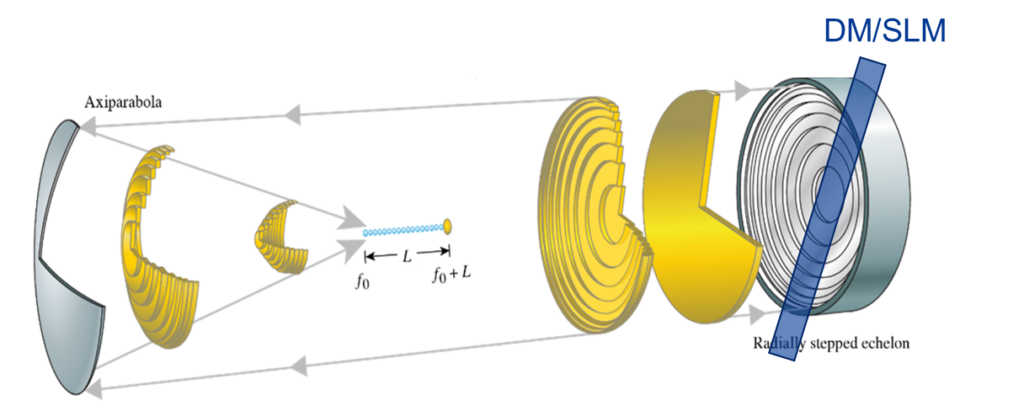
This setup will replace the echelon with a deformable mirror and spatial light modulator to achieve the requisite radial group delay.
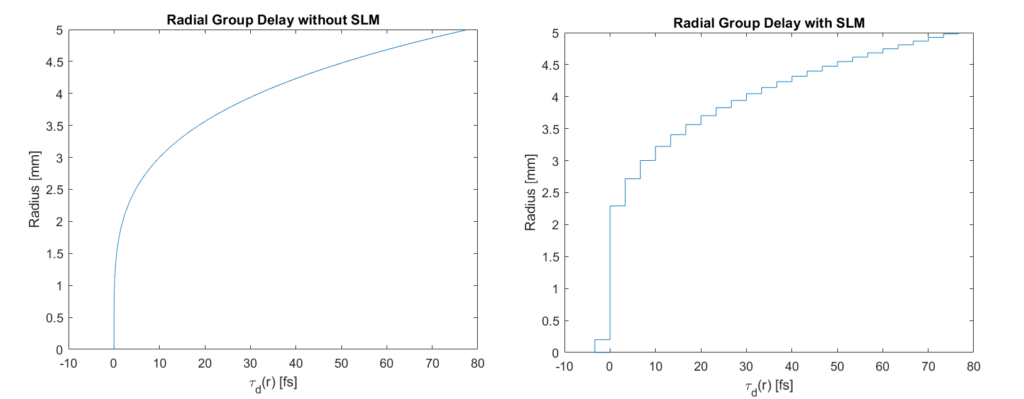
A spatial light modulator locally flattens the phase fronts to minimize phase front distortion through the optical system.
Spatial Light Modulator Calibration
- Using a Michaelson interferometer, we determined that full wave input to the SLM imparts 2 fringes of phase and half wave input corresponds to 1 fringe of phase.
- Analysis was conducted using a green an red laser. The difference in imparted phase between these wavelengths was negligible.
- The imparted SLM phase is very sensitive to polarization.
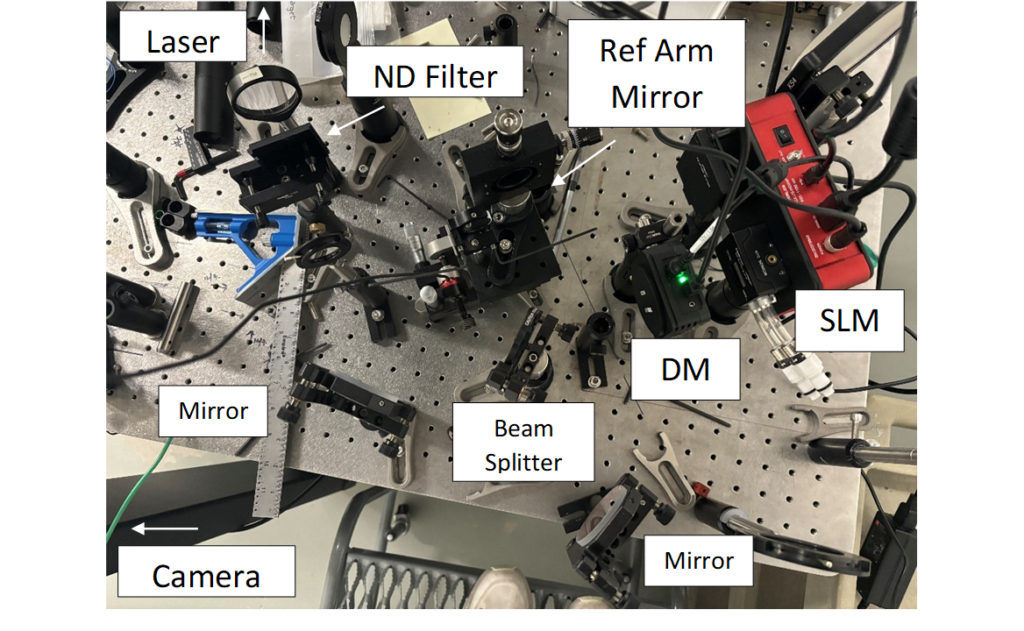
Michaelson interferometer experimental setup
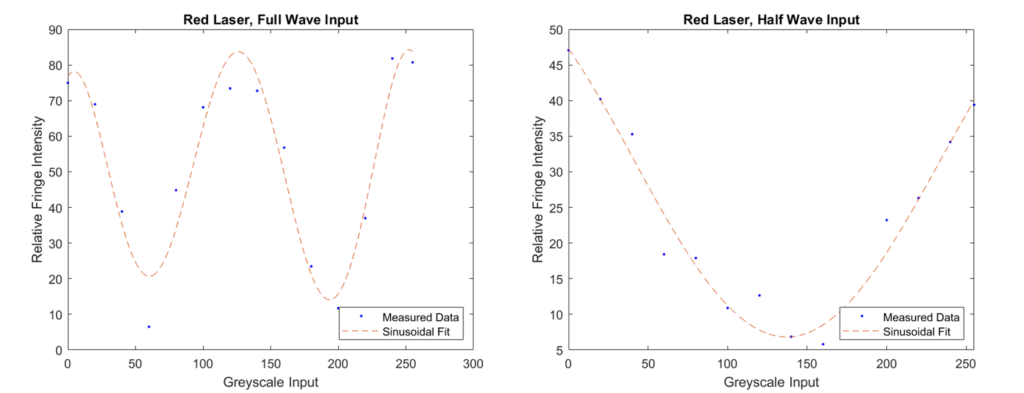
Fringe intensity modulation as a result of SLM input for a red laser
Deformable Mirror Calibration
- The same Michaelson interferometer was used to characterize the deformable mirror.
- The deformable mirror was determined to have some curvature.
- We attempted to correct this curvature by manipulating various Zernike coefficients in the Thorlabs DM software.
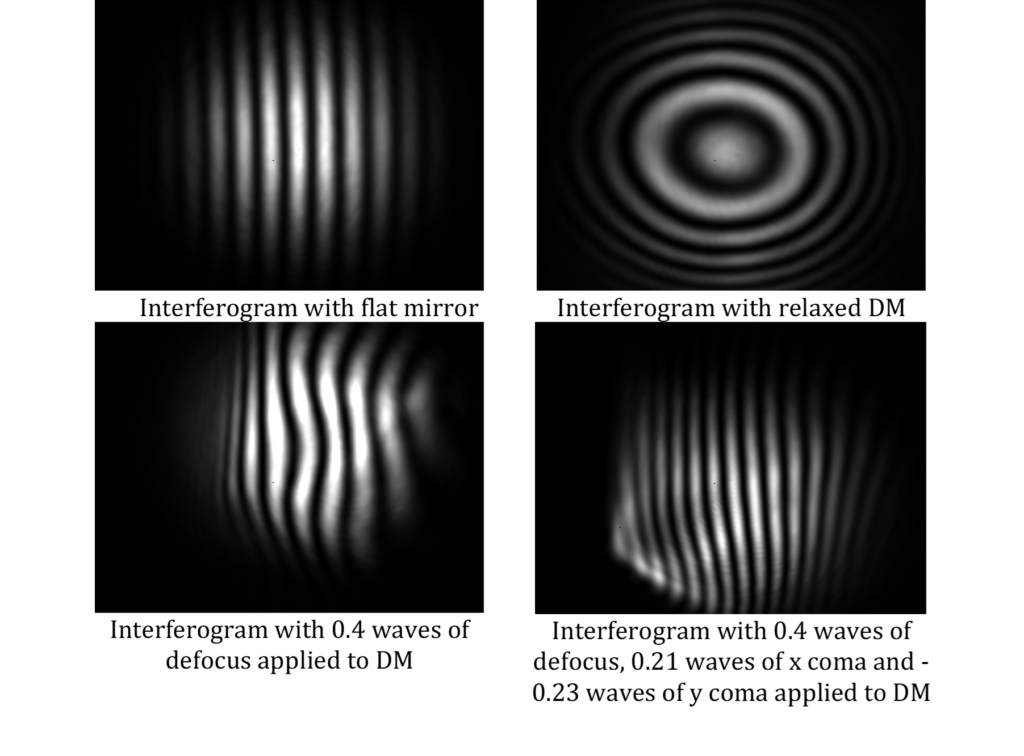
Interferograms resulting from various deformable mirror Zernike
inputs.
Demonstration of Spectral Interference
- To achieve spectral interference, the reference and test arm path length needed to be as close as possible.
- We used an OZ Optics computer controlled delay line to achieve interference once the path lengths were as close as possible.
- Achieving spectral interference with this setup will enable us to measure flying focus trajectories in the future.

Integrated experimental setup
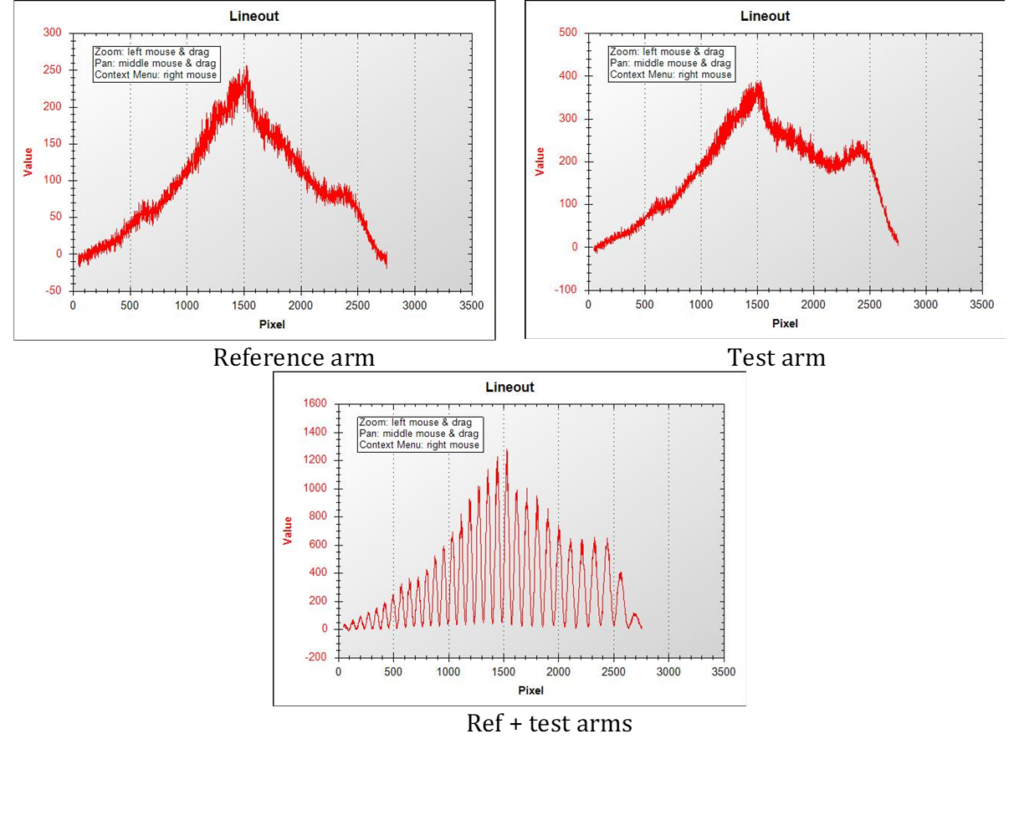
Spectral interferometry results
Future Work
| Achieving spectral interference is a small step in achieving a tunable ultrafast flying focus. Further research is needed to prove the viability of this technique through modeling and experimental methods. | |
| Modeling: – Determine whether this DM gives enough precision in radial group delay – Determine if a more expensive DM will lead to better precision – Determine the margin of error in a flying focus trajectory if adaptive optics elements are not aligned correctly with optical axis -Determine the most extreme focal trajectories that are possible with this setup. | Experimental: -Explore mounting DM and SLM on a 2-axis piezoelectric stage to perfectly align the center axes to the incoming beam. – Use FaroArm to determine accuracy of DM sag -Examine the effect of using SLM and DM off-axis |
Acknowledgements and References
Thank you to my advisors Dr. Jeremy Pigeon and Professor John Palastro for their help throughout this project. I would also like to thank the LLE for their continued support of undergraduate research.
Spatiotemporal control of laser intensity. D. H. Froula, D. Turnbull, A. S. Davies, T. J. Kessler, D. Haberberger, J. P. Palastro, S.-W. Bahk, I. A. Begishev, R. Boni, S. Bucht, J. Katz, and J. L. Shaw. 2018, Nature Photonics.
Ultrabroadband flying-focus using an axiparabola-echelon pair. J. J. Pigeon, P. Franke, M. Lim Pac Chong, J. Katz, R. Boni, J. P. Palastro, and D. H. Froula. 2023, Optics Express
Programmable-trajectory ultrafast flying focus pulses. M. V. Ambat, J. L. Shaw, J. J. Pigeon, K. G. Miller, T. T. Simpson, D. H. Froula, and J. P. Palastro. 2023, Opt. Express.
